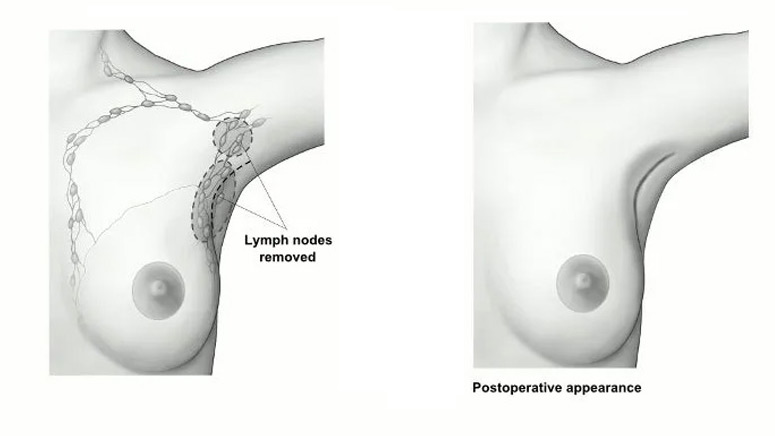Axillary lymph node dissection is recommended for people that have breast cancer. It is an effective treatment method for breast cancer. The procedure is widely considered necessary in the overall treatment of breast cancer [1]. It is a surgical management method that helps prevent the cancerous cells from spreading and also from returning. Keep reading this article to learn all about the procedure, including how it works, its purpose, its complications, and recovery.
What is an axillary lymph node dissection?

An axillary lymph node dissection (ALND) is a surgical procedure used as a treatment method for certain cases of breast cancer. Usually in cases where the tumor has spread to the lymph nodes around your underarm area (axilla).
Before the procedure is recommended, your doctor will first conduct a sentinel lymph node biopsy. The results will determine if axillary lymph node dissection will be done. The biopsy will tell how many lymph nodes are suspected to be cancerous, which will determine how many of them your doctor will remove with the procedure. It can range between 5 to 30 of them.
ALND is in levels, depending on how far the affected nodes have spread. The different levels of treatment your doctor may recommend include:
● First level
This is the least chronic state of axillary lymph nodes which requires the least aggressive treatment. At this level, the affected lymph nodes will have spread to the bottom edge of the pectoralis minor muscle. This muscle is located along the upper chest area.
● Second level
At this level the affected lymph nodes would have spread to the area underneath your pectoralis minor muscle. Extra attention will need to be given to curb your condition.
● Third level
This is the most severe case of this condition. It is when the lymph nodes are in the area above your pectoralis minor muscle. At this stage, the most aggressive treatment approach of ALND is required to remove the nodes.













